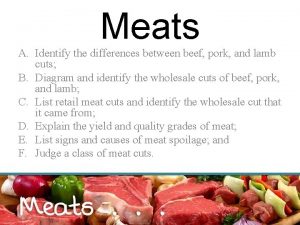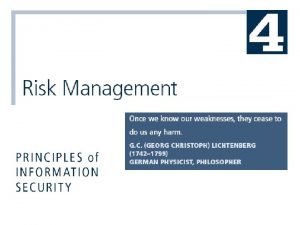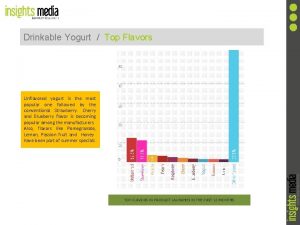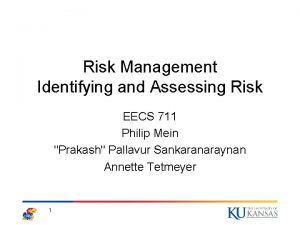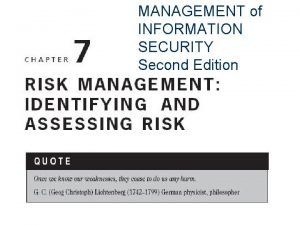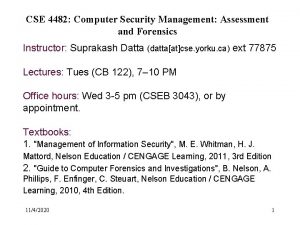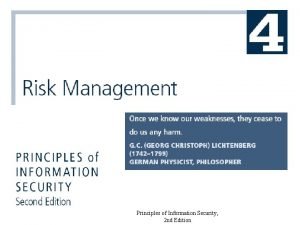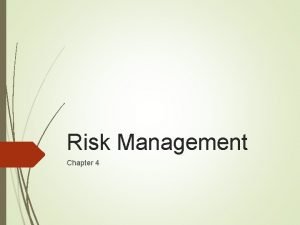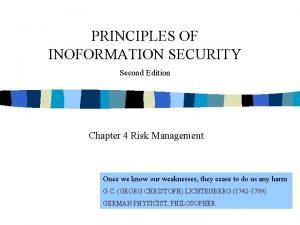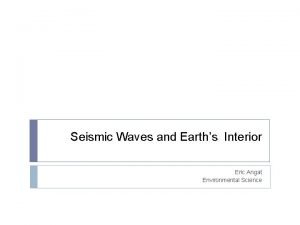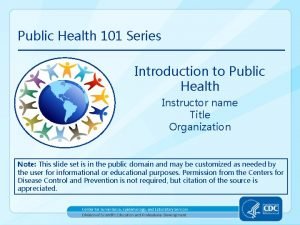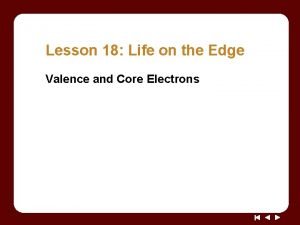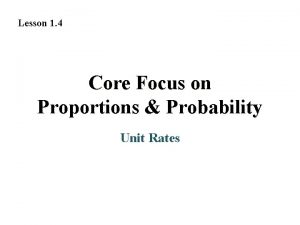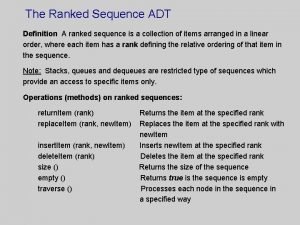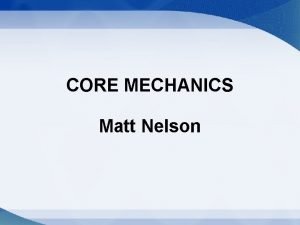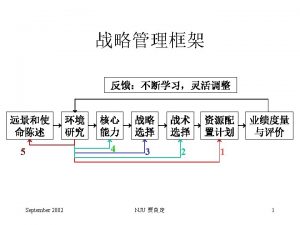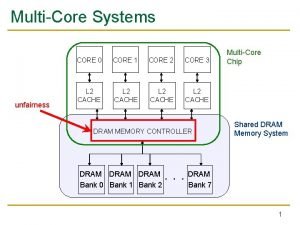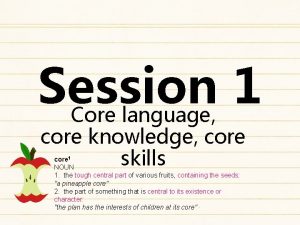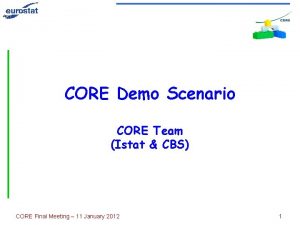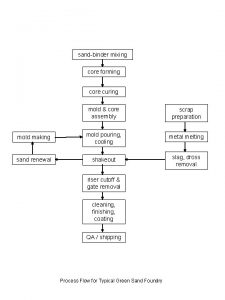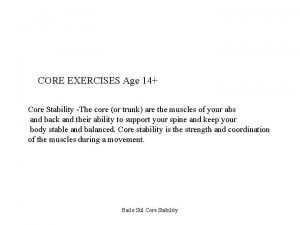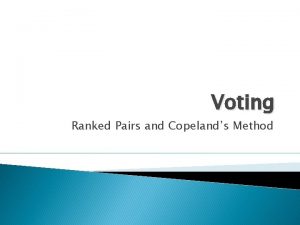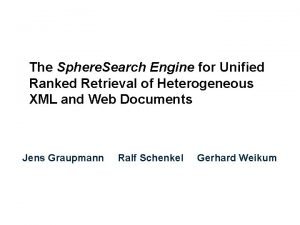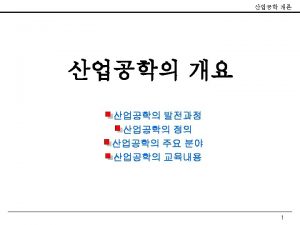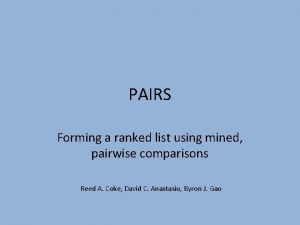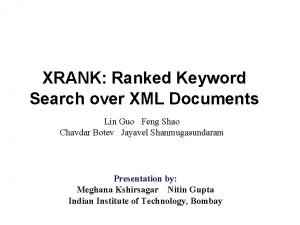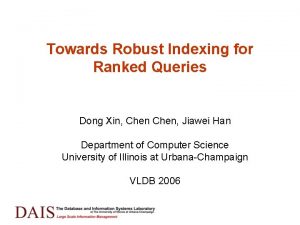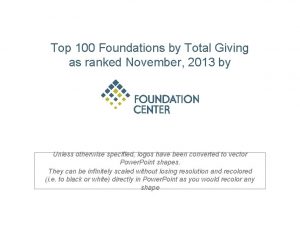DV 8 k A ranked core and midfrequency





![Methods: 6 Steps in making a wordlist [from Nation and Webb, 2011] 1. Reason Methods: 6 Steps in making a wordlist [from Nation and Webb, 2011] 1. Reason](https://slidetodoc.com/presentation_image/21010aff16ad7d382813d22779f22b1e/image-6.jpg)



























- Slides: 33

DV 8 k - A ranked “core” and “midfrequency” level 8000 -word list: compilation, justification, and validation Nigel P. Daly Ph. D candidate, NTNU (TAITRA ITI Business English Trainer) March 11, 2017

Contents Purpose for creating the wordlist Methods 6 Steps in wordlist compilation Results Interrater agreement & Parts of speech ratios Cross-comparison of wordlists (BNC, BNC+COCA, CEEC, GSL, NGSL) Discussion Cross-comparisons - difficulties involved Initial validation evidence Limitations Future research Q&A

The importance of Wordlists Language ability is largely a function of vocabulary size (Alderson, 2005) Vocabulary is a key indicator language ability (Laufer, 1992; Laufer & Goldstein, 2004) and reading ability (Nation, 2001; Qian 2002). Measuring vocabulary is thus an important area in language acquisition and its research. At the foundation of this research are wordlists like the BNC 20000 -word list, the GSL (West, 1953), and the AWL (Coxhead, 2000). Wordlists are also used in testing, like the BNC 20 k in the VST (Beglar, 2010) and the CEEC’s EWRL 6000 -word list for Taiwan’s university entrance exams

Purpose for creating the wordlist To make an “objective” ranked wordlist of 8000 words in order to: 1. represent a principled ranking of words from a large corpus of a wide range of genres of authentic texts (COCA) 1. serve as the basis for a diagnostic vocabulary test sensitive enough to pinpoint “receptive” vocab knowledge not just between but also within 1000 levels EFL university-aged learners - 2000 -3000 words (Laufer, 2000) So, need a sensitive measuring tool to measure vocab within 1000 levels, ie need a ranked list Learners tend to know most frequent vocabulary first (eg Ellis, 2002; Ellis & Larsen-Freeman, 2009; Bybee, 1995, 2006) 1. focus on core (first 2000 words) and “extended” mid-level frequencies (2000 to 8000), which Schmitt and Schmitt (2012) have argued should be the broadened benchmarks for language learning and teaching. Note: Guidelines for the wordlist creation are from Nation and Webb’s (2011; ch. 8) recommended 6 steps.

Need to go beyond core vocabulary Core vocabulary: 80% text coverage → 2000 wordfamilies Mid-frequency: 95% text comprehension → 8 -9000 wf (Nation, 2006) Fluent reading with adequate compreh. 98% comp → 12000 wf NS → 20 000 wf 100% comprehension → 80000 wf (Milton, 2009)
![Methods 6 Steps in making a wordlist from Nation and Webb 2011 1 Reason Methods: 6 Steps in making a wordlist [from Nation and Webb, 2011] 1. Reason](https://slidetodoc.com/presentation_image/21010aff16ad7d382813d22779f22b1e/image-6.jpg)
Methods: 6 Steps in making a wordlist [from Nation and Webb, 2011] 1. Reason for list, or what RQ the list will answer 2. Decide unit of counting 3. Choose or create a suitable corpus 4. What will be counted as words in the list 5. Criteria to order the words … Rater’s compilation principles 6. Cross-check resulting list on another corpus or against another list to see if there are notable omissions or unusual inclusions or placements

Step 1: Rationale Main reason: Use for diagnostic vocabulary testing of ELLs for core to midfrequency levels No ranked wordlist covering midfrequency levels exits DV-8 k 8000 words Rank // Word // POS // Frequency CEEC alphabetized in 1080 -word levels; words and synonyms BNC alphabetized in 1000 - word levels; wordfamily headwords

Step 2: Decide unit of counting - wordfamily “Word family” - most suitable for receptive testing purposes (Bauer and Nation, 1993) Eg, word family headword “Care” if learners know noun lemma (care), they can infer verb lemma and its lemma forms (care, cares, cared, caring) adj (careful, caring) and adv lemmas (carefully, caringly) (they can applying word building rules and “morphological problem-solving” (Anglin, 1993), especially with context clues (Biemiller, 2005)) → only one lemma was retained to represent a wordfamily: reduce redundancies and overly long vocabulary lists diagnostic tests with many redundancies will reduce its precision to estimate vocabulary size

Step 2: Decide unit of counting - word/lemma of different primary meaning The most frequent lemma form was selected to represent a word family to remove redundant terms. Eg 1: “absolutely” = wordfamily → SOAP freq. rank 487 vs “absolute” (rank 3540) → absolute Eg 2: If primary meaning (Google “def”) was different among lemmas, they would be retained; “Crop” = 2 wordfamilies: - Crop n. = cultivated plant - Crop v. = cut short “Words” defined as having different primary meaning

Step 3: Choose or create a suitable corpus - COCA largest and most well-balanced database of contemporary English CLAWS POS tagging technology (96%) → manually checked over 2 -3 months → “very good” accuracy [http: //www. wordfrequency. info/100 k_faq. asp]; (accuracy = crucial for making a ranked list of wordfamilies based on highest frequency lemma forms) 2, 000 -word core wordlist → COCA’s SOAP sub-corpus (100 m words) - scripts from televised dramas → more like spoken genre with more basic, daily convo language 2000 -8000 wordlist → 400+ million word corpus: balanced genre range - spoken, fiction, magazine, newspaper, and academic journal subcorpora, with each subcorpus having over 100 m words.

Step 4: What will be counted as words in the list 6 rules = 3 inclusion + 3 exclusion Rule and Action Rule 1. INCLUDE Elaboration lower frequency lemmas iff they have different primary meanings Examples “appropriate” (v) = take (sth) for one's own use “appropriate” (adj) = suitable or proper in the circumstances. Rule 2. INCLUDE different lemmas or lemma forms if possible confusion could arise “cross” n. ≠ “cross” v. , “crossing” = ? ? so all three were retained ("crossroads" was deleted due to its transparent meaning; see Rule 6) Rule 3. INCLUDE if wordform (affix) connection between diff lemmas is more uncommon and “possibly” unclear to a learner at that level (lower ranking words → higher ability level) applaud vs. and applause perceive vs perception (cf. Bauer & Nation’s (1993) levels 5 -7)

Step 4: What will be counted as words in the list 6 rules = 3 inclusion + 3 exclusion Rule and Action Elaboration Examples Rule 4. EXCLUDE if the prefixes for roots can be more readily known mis-conduct: if conduct is known, the prefix mis- indicates “mistaken” or “wrong” conduct (cf. Bauer & Nation’s (1993) level 3) Rule 5. EXCLUDE proper nouns with capital letters America, Nigeria Rule 6. EXCLUDE compound nouns if both words are lower frequency and transparent Bookstore, crossroads

Step 5: Ordering the words (5 steps) DV-8 k = 2 lists: core 2000 -word list [COCA’s SOAP 100 m words] + 6000 words [COCA 400 m words]. 1. Delete redundant lemmas, low dispersion and other words, 2. → separately rank 2 lists (1 -2000 and 2001 to 8000) according to frequency 3. Combine 2 lists into 1 Excel list, and then alphabetize it 4. Delete words from 6000 -word list that duplicated ones on the shorter list 5. Renumber the 6000 -word list and add to the 2000 -word list for the final step in the creation of the DV-8 k (Over several months, several proof-readings and revisions were made)

Step 6: Cross-checking -- Comparing Types Core lists (2000 words): BNC, COCA+BNC, CEEC, GSL, NGSL Long lists (6 -8000 words): BNC, COCA+BNC, CEEC, GSL, NGSL Comparisons by type, not token or wordfamily “in good health” Eg He is fit, which is fitting for an athlete. This sentence: 9 tokens, “suitable” 8 types (2 x is = 1 type), and 7 wordfamilies … fit (adj) and fitting (adj) are traditionally lumped into 1 wordfamily despite having different meanings. ** Comparing wordfamilies → underestimates the “different” words ** Comparing tokens → overestimate if homographs are counted (crop v. and n. = 2)

Step 6: Cross-check with other frequency lists Core lists: ● BNC, COCA+BNC, CEEC, GSL, NGSL Long lists: ● BNC, COCA+BNC, CEEC, GSL, NGSL Eg (Ant. Word. Profiler) 77% of DV-8 k types appear on BNC COCA Method note: Ant. Word. Profiler gave scores between Lextutor’s Vocab. Profiler (94%) and Text Lex Compare (71%)

Results - Interrater agreement & deletions Interrater agreement (1000 words): 86% ● Rater: A native speaking English language teacher with almost 20 years teaching experience CORE LIST = 1400 deleted words MID-FREQ LIST = 6550 deleted

Results: DV-8 k part-of-speech ratios Parts of speech ratio in the DV-8 k Distribution significance: 1. Indicates most common wordform representatives of the wordfamily 2. Ratio used on the diagnostic vocabulary test (each 1000 word level = same n: adj: v: adv ratio)

Results: Cross-checking - 6 CORE lists across 5 TYPE comparisons Averages from 5 comparisons: 1. Very dissimilar 1. Overall avg: 59. 9 -71. 4% 1. DV-2 k: 62. 9% 1. Wide Range: 49. 2 - 80. 7%

Results: Cross-checking - 4 LONG lists across 3 TYPE comparisons Averages from 3 comparisons 1. Very dissimilar 1. Overall avg: 70. 4 -74. 3% 1. DV-2 k: 73. 8% 1. Narrower Range: 64. 8 -80. 2%

Results: Cross-checking - averages of all wordlist comparisons Comparing all wordlists in their avg cross-comparisons with each other. . . 1. Low percentage overlap (reasons will be given later) 2. Long lists: DV-8 k and B+C most repeated types 3. Core lists B+C and BNC most repeated types

Results: DV-2 k and DV-8 k compared to other lists Most similar - NGSL (lemma list) = 74% DV-2 k uses highest frequency lemma forms Most similar - B+C = 77% DV-8 k based on COCA, like the B+C

Difficulties comparing Different lists. . . Difficult to show that one wordlist is better than another. Comparing wordlists is imprecise … perhaps incommensurable… Different: 1. Corpora 2. Definition of “word” 3. Inclusion principles 4. Sorting procedures 5. Purposes

Discussion Comparing wordlists is imprecise … perhaps incommensurable… 1. Different corpora Big (COCA 400 m) vs small (GSL 2. 5 m) US (COCA) vs UK (BNC) … bloke, aubergine. . . Old (1953 GSL) vs new (COCA) … chimney, plow … Genre balance (COCA 400 m + 100 m spoken) vs imbalance (BNC 90 m written, 10 m spoken) 1. Different definition of “word” wordfamily - GSL vs all lemmas - NGSL vs DV-8 k highest freq lemma as wordfamily

Discussion Comparing wordlists is imprecise … perhaps incommensurable… 3. Different inclusion principles All words - NGSL vs no proper noun - DV-8 k 4. Different sorting procedures A-Z 1000 levels for BNC, B+C vs freq+dispersion+highest freq lemma - DV 8 k 5. Different purposes Text coverage - NGSL @ 92% vs pedagogic list - CEEC vs diagnostic testing - DV-8 k

Initial Validation evidence Diagnostic Vocabulary Test 180 qs, 15 -q per 500 -word level [5 qs/100 words], 12 levels (Levels 2 -7, rank: 10017000) 47 intermediate ss (TOEIC: 545 to 880; avg: 718) Results Steady decline with each increasing level Expected - ELLs should be more familiar with more common words Level 2 b (1501 -2000) - poorly performing items … Words selected too difficult?

Limitations 1. The unit of counting - lemma as representing wordfamily Lower level learners may be unfamiliar with word inflections and derivatives within wordfamilies (Zimmerman & Schmitt, 2002; Ward & Chuenjundaeng, 2009) This made comparability by “type” with other wordlists difficult (wordfamily lists tend to use base forms to represent wordfamilies 2. Ranking and frequency information, Aggregating deleted wordfamily freq info would give a more accurate ranking (cf. Gardner & Davies, 2013 AVL) Lemmas with more than one meaning (crop v = 1. cut short, 2. To cultivate plants)… meanings are not distinguished → overestimates the frequency of that “word” [def 1. ] and underestimates total number of words by not recognizing some words. COCA wordlists do not recognize multiword units (→ vastly underestimates total number of words)

Limitations 3. The use of corpora in wordlist compilation What does the corpus “represent”? Eg COCA cannot purport to represent the learner’s mental lexicon (eg different order of learning, etc) … but may be described as an objective wordlist representing most commonly encountered 1 -word lemma forms in (American) English use across several genres 4. “Primary” definitions … Secondary meanings were not considered (as mentioned in 2: crop) How were the primary definitions decided by Google (ie The Oxford College Dictionary; Lew, 2011)? … they sometimes were not what I assumed to be more common, and they may not be the definition students are most familiar with

Future research English as a lingua franca …? The DV-8 k is based on authentic and professional published English language texts in the USA. How does its rankings and frequencies resemble or differ from those from more varied and intercultural sources (Web corpora; ELF, etc)? Aggregating word frequencies … Future approaches to create a wordlist of lemma-families (as in this study) can benefit from aggregating the frequency info from the deleted semantically redundant lemmas and lemma forms (cf. Gardner and Davies, 2013)

Future research The CEEC wordlist for Taiwan’s entrance exams 15+ years old, based on several wordlists and used dictionary frequency information. Is it time to update this list with more accurate frequency information for sources like COCA or the BNC-COCA combination? How can a frequency approach be balanced with pedagogical need (eg survival English; localized English, etc)? Current tools massively underestimate extent of “possible” word knowledge … Multiword phrases with a singular meaning as is words with more than one definition (Cobb, 2013). These should all be treated as individual words and incorporated into currently existing wordlists.

Conclusion The purpose of this list is for diagnostic vocabulary testing, an under-researched area. Corpus and computer technology are ever improving … Big data is getting bigger These advances are leading to better tools to teach and assess students. It is time for finegrained and personalized Diagnostic language learning, tracking and testing … For this, wordlists will play a crucial, but perhaps unacknowledged, role.

Q&A Thank you for your attention. This paper has 4 aims: 1. to argue for the need of a ranked wordlist of core and mid-level vocabulary for English language learners (ELLs); 2. present the compilation methods of making a list of 8000 word families; 3. compare the list with other existing wordlists, such as Nation’s BNC word lists, the 1900 word General Service List, the 2800 -word New General Service List, and Taiwan’s 6480 word CEEC list; and 4. provide preliminary validation evidence. DV-8 k is ranked other wordlists have lumped words into 1000 bands (e. g. , Nation’s BNC/COCA 25000 word list used in the range program) or special functional grouping, like the Coxhead’s AWL. Most ELLs only know around 2000 words, so wordlists based on 1000 bands are a blunt instrument if used in diagnostic tests like the Vocabulary Levels Test (VLT) to measure vocabulary mastery at these levels. The first 2000 words → COCA’s SOAP wordlist (corpus of 100 million words from TV scripts), 6000 → COCA’s wordlist from a 400 -million-word corpus composed of a wide and balanced range of genres including news, academic and fiction. DV-8 k - only lemma forms with the highest frequency and dispersion scores, manual elimination process removed lemmas sharing the same primary meaning of higher frequency forms. Feel free to contact me: 86% interrater agreement when elimination criteria applied by another rater on 1000 words ● ndaly@hotmail. com Initial validation evidence comes from a pilot diagnostic vocabulary test of 180 words sampling 3 words for every group of 100 words across 6000 words.

References Alderson, J. C. (2005). Diagnosing foreign language proficiency: The interface between learning and assessment. A&C Black. Anglin, J. M. , Miller, G. A. , & Wakefield, P. C. (1993). Vocabulary development: A morphological analysis. Monographs of the society for research in child development Serial No. 238, 58 (10 Serial No. 238), 1 -165. Bauer, L. , & Nation, P. (1993). Word families. International journal of Lexicography, 6(4), 253 -279. Beglar, D. (2010). A Rasch-based validation of the Vocabulary Size Test. Language Testing, 27(1), 101 -118. Beglar, D. , & Hunt, A. (1999). Revising and validating the 2000 Word Level and University Word Level Vocabulary Tests. Language Testing, 16(2), 131– 162. Biemiller, A. (2005). Size and Sequence in Vocabulary Development: Implications for Choosing Words for Primary Grade Vocabulary Instruction. In E. H. Hiebert & M. L. Kamil (Eds. ), Teaching and learning vocabulary: Bringing research into practice (pp. 223 -242). Mahwah, Nj. Lawrence Erlbaum Associates. Browne, C. , Culligan, B. & Phillips, J. (2013). The New General Service List. Retrieved from http: //www. newgeneralservicelist. org. Bybee, J. (1995). Regular morphology and the lexicon. Language and cognitive processes, 10(5), 425 -455. Bybee, J. L. (2006). From usage to grammar: The mind's response to repetition. Language, 82(4), 711 -733. Cobb, T. (2013). FREQUENCY 2. 0: Incorporating homoforms and multiword units in pedagogical frequency lists. L 2 Vocabulary acquisition, knowledge and use: new perspectives on assessment and corpus analysis, 79 -107. Coxhead, A. (2000). A new academic word list. TESOL Quarterly, 34(2), 213 -238. Ellis, N. C. (2002). Frequency effects in language processing. Studies in second language acquisition, 24(02), 143 -188. Ellis, N. C. , & Larsen‐Freeman, D. (2009). Constructing a second language: Analyses and computational simulations of the emergence of linguistic constructions from usage. Language Learning, 59(s 1), 90 -125. Laufer, B. (2000). Task effect on instructed vocabulary learning: The hypothesis of ‘involvement’. Selected Papers from AILA ’ 99 Tokyo (pp. 47– 62). Tokyo: Waseda University Press.

References Laufer, B. (1992). How much lexis is necessary for reading comprehension? . In H. Bejoint & P. Arnaud (Eds. ), Vocabulary and applied linguistics (pp. 126 -132). Basingstoke & London: Macmillan. Laufer, B. , & Goldstein, Z. (2004). Testing vocabulary knowledge: Size, strength, and computer adaptiveness. Language Learning, 54(3), 399 -436. Lew, R. (2011). Online Dictionaries of English. In P. A. Fuertes-Olivera and H. Bergenholtz (Eds. ), E-Lexicography: The internet, digital initiatives and lexicography (pp. 230 -250). London/New York: Continuum. Milton, J. (2009). Measuring second language vocabulary acquisition (Vol. 45). Multilingual Matters. Nation, I. (2006). How large a vocabulary is needed for reading and listening? . Canadian Modern Language Review, 63(1), 59 -82. Nation, I. S. P. (2001). Learning vocabulary in another language. Cambridge: Cambridge University Press. Nation, I. S. , & Webb, S. A. (2011). Researching and analyzing vocabulary. Heinle, Cengage Learning. Qian, D. D. (2002). Investigating the relationship between vocabulary knowledge and academic reading performance: An assessment perspective. Language learning, 52(3), 513 -536. Schmitt, N. , & Zimmerman, C. B. (2002). Derivative word forms: What do learners know? . Tesol Quarterly, 145 -171. Schmitt, N. , & Schmitt, D. (2012). A reassessment of frequency and vocabulary size in L 2 vocabulary teaching. Language Teaching, 47(04), 484 -503. Ward, J. , & Chuenjundaeng, J. (2009). Suffix knowledge: Acquisition and applications. System, 37(3), 461 -469. West, M. P. (1953). A General Service List of English Words. With Semantic Frequencies and Asupplementary Word-list for the Writing of Popular Science and Technology. Compiled and Edited by M. West. (Revised and Enlarged Edition. ). Longmans, Green & Company.
 The brittle, rocky outer layer of earth
The brittle, rocky outer layer of earth Characteristics of continental crust
Characteristics of continental crust Purpose of paradox
Purpose of paradox Ranked vulnerability risk worksheet
Ranked vulnerability risk worksheet Information asset risk worksheet
Information asset risk worksheet How to tell the difference between beef and pork
How to tell the difference between beef and pork Difference between intramolecular and intermolecular
Difference between intramolecular and intermolecular Weighted factor analysis worksheet
Weighted factor analysis worksheet Ranked vulnerability risk worksheet
Ranked vulnerability risk worksheet Ranked vulnerability risk worksheet
Ranked vulnerability risk worksheet What were the military duties of ranked officers in othello
What were the military duties of ranked officers in othello Unflavored yogurt
Unflavored yogurt Threat vulnerability pairs
Threat vulnerability pairs Weighted factor analysis worksheet
Weighted factor analysis worksheet Ranked vulnerability risk worksheet
Ranked vulnerability risk worksheet Rice a roni flavors ranked
Rice a roni flavors ranked Ranked vulnerability risk worksheet
Ranked vulnerability risk worksheet Principles of information security 4th edition
Principles of information security 4th edition Ranked vulnerability risk worksheet
Ranked vulnerability risk worksheet Asset identification risk management
Asset identification risk management Ranked vulnerability risk worksheet
Ranked vulnerability risk worksheet Layers of earth from most dense to least dense
Layers of earth from most dense to least dense 12 values
12 values A company's resources and capabilities represent
A company's resources and capabilities represent Which type of wave can penetrate the outer and inner core?
Which type of wave can penetrate the outer and inner core? Resources and competencies analysis
Resources and competencies analysis Core functions and essential services of public health
Core functions and essential services of public health Public health 101
Public health 101 Project roles and responsibilities matrix
Project roles and responsibilities matrix Mkt 600
Mkt 600 Creating and capturing customer value
Creating and capturing customer value Life on the edge valence and core electrons answer key
Life on the edge valence and core electrons answer key Core focus on proportions and probability answer key
Core focus on proportions and probability answer key Ipac online course
Ipac online course





